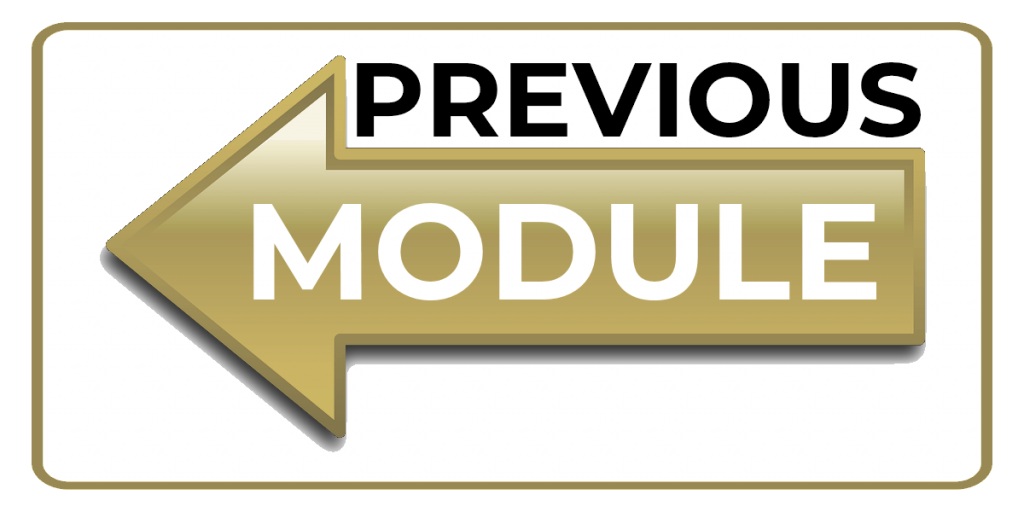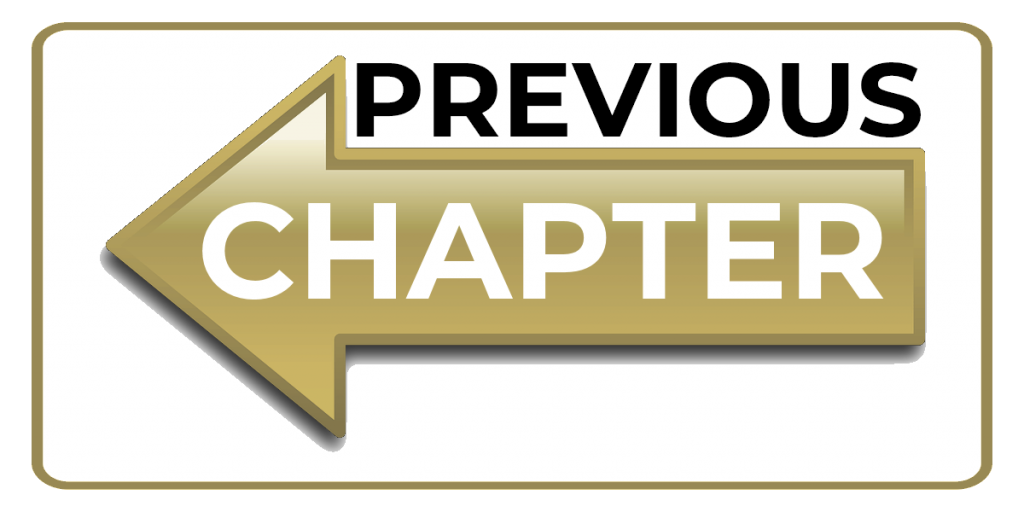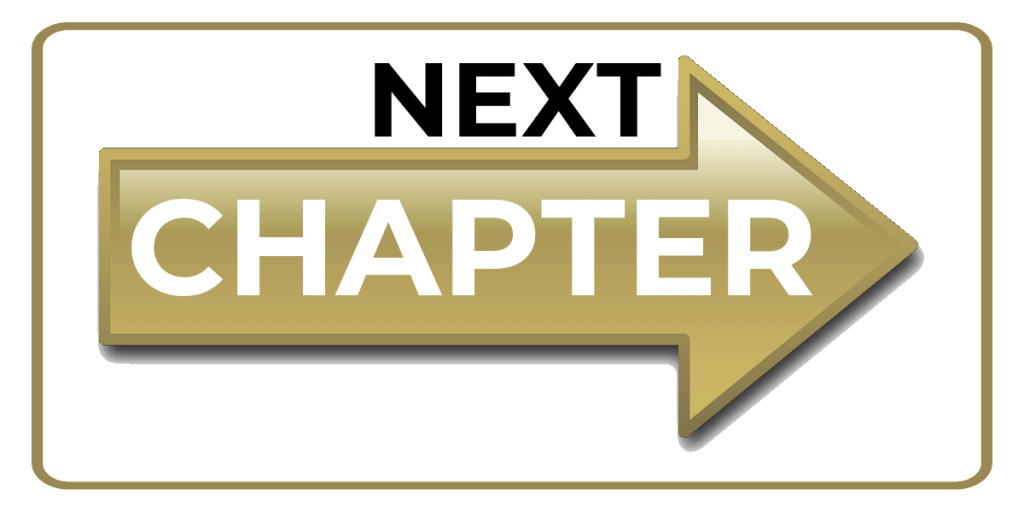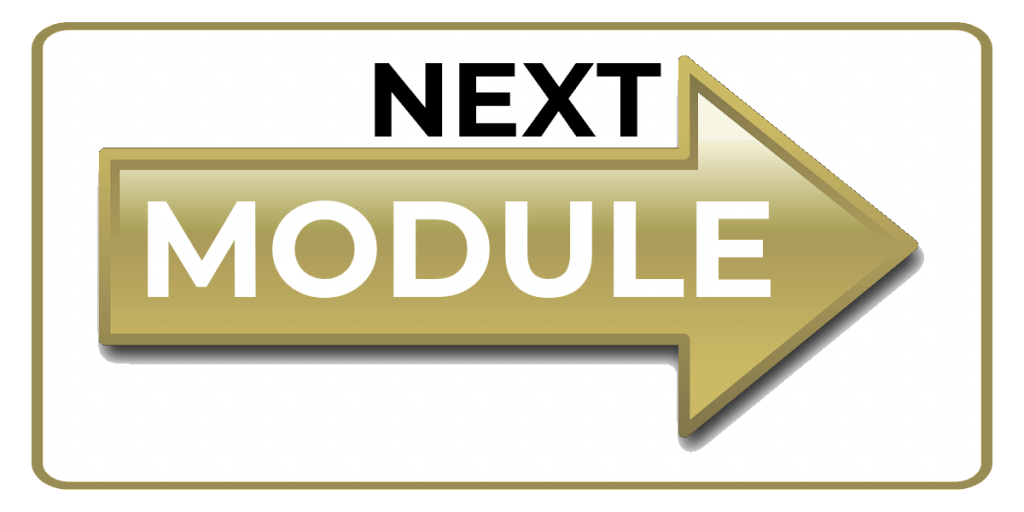
MODULE 1 - PLANNING YOUR ELK HUNT
CHAPTER 2: OBTAINING AN ELK TAG

Obtaining a tag is the pivotal, fundamental part of planning your elk hunt. Every state that allows the hunting of elk requires the hunter to obtain a license and/or tag prior to the hunt. Some states require a Hunting “License” AND an Elk “Tag”. Other states require just an Elk License. For the sake of simplicity, in this section I will refer to these collectively as “tags”. I will break down the individual requirements of each state later on in this chapter.
The cost of elk tags, as well as the method of obtaining elk tags, can vary greatly from state to state. Additionally, the costs and methods of obtaining tags can vary within a state. Obtaining elk tags can be broken down into three main categories: Over-the-Counter (OTC) tags, Limited Entry (Draw) tags, and Landowner tags. In addition to understanding these tag categories, it is critical to understand how and where these tags can be used.
TYPES OF TAGS
Tags are usually issued based upon a geographical region and season. Geographical regions, known as “units”, are established within each state to help better manage the game – and the hunters – on a more detailed level. Tags are often valid only for a certain unit (or combination of units).
An elk-hunting “unit” is a physical, geographical section of land within the state. Each state is divided into elk hunting units, and each unit might be managed differently with different seasons and regulations. Sometimes a unit has a clear boundary — one side of a river is Unit 1, and the other side of the river is Unit 2. Other times, the unit boundaries are more arbitrarily defined and aren’t divided by visible topographical features. It is up to the hunter to know where the unit boundaries are and make sure they stay within the boundaries where their elk tag is valid.
In addition to the geographical limitations of an elk tag, there are seasonal limitations. Tags are usually good for a certain season, which often limits the weapon that can be used. Referencing back to Chapter 1 of this Module, it is important to know which weapon you plan to use for the specific area you plan to hunt. From there, you can find the tags that are available. For instance, if you wanted to hunt a particular unit in Idaho with a bow, there may or may not be tags available to purchase over the counter, and it may require that you apply for a special “lottery” or draw to try and obtain a tag. Understanding the state you plan to hunt, as well as the available tags within each season and unit of that state, is critical to formulating a plan and obtaining the proper tags.
OVER-THE-COUNTER (OTC) ELK TAGS
Many hunters that dream of hunting elk haven’t actually hunted them because they feel the opportunity to obtain a tag is simply out of reach. Perhaps you’ve heard that it takes 20 years to draw an Arizona elk tag, and that kind of a wait just isn’t worth it. While it is true that 20 years is a long time to wait to go on an elk hunt, there are multiple opportunities for a hunter to obtain a guaranteed tag and hunt elk in several states every fall!
These guaranteed tags are called “Over-the-Counter” or OTC tags, and they are just like they sound – you simply show up and buy them “over the counter” at a sporting goods store or outdoor retailer. The number of states that offer true OTC elk hunting opportunities for non-residents are decreasing, and will likely continue to decrease. Montana and Wyoming offer “general” tags for residents and non-residents, but NR are required to apply for a limited quantity while residents can purchase the licenses over-the-counter. Idaho still describes their NR elk tags as OTC, but the quantities are limited and non-resident hunters are assigned a random number on the date those tags go on sale. Depending on the random number you receive, you may or may not be able to purchase an elk tag – especially in the area you hope to hunt. Colorado and Oregon are really the only states left with true OTC elk hunting opportunities, and those opportunities are weakening rapidly.
Some states that offer OTC elk tags require the tags to be purchased by a certain date, or they set a limited quota of OTC tags that are available on a first-come/first-served basis. In some cases, you will need to purchase your OTC tag far in advance, while in other cases you will be able to literally show up and buy a tag as you head into the field. Nothing rains on an elk hunting parade like showing up and finding out that the OTC tag you were planning to purchase has sold out or is no longer available.
OTC tags can be good for a specific unit, or they might be valid in a group of units. Colorado, for example, allows an archery hunter to purchase an OTC archery tag that is valid in dozens of units during the archery season. During the same timeframe, however, there are other units within the state that are off-limits to hunt with that OTC tag. These “limited” units require a special tag that is limited to those who have applied and drawn it through the draw (or “lottery”).
Additionally, OTC tags might be valid for any elk in some units, but only for bulls, or only for cows, in other units. You also need to consider that a unit might offer an OTC tag for one season or hunting method (archery, for instance), but within that same unit, another season or hunting method (rifle) might require a limited entry tag.
I’m trying really hard to not make this confusing, but the hard reality is that it is. In a nutshell, states have multiple hunting units to manage elk and hunters. A tag is good for a particular unit or group of units within the state. The tag often limits you to a particular season and/or weapon. It might also limit you on the sex of elk that can be taken during that particular hunt.
LIMITED ENTRY (DRAW) TAGS
The next type of tag, which I mentioned previously, is a Limited Entry or Controlled Hunt tag. Again, some states use different terminology for this, but the overall idea is that the tag is not available to everyone and is only available in limited quantities. Since there is a finite number of these tags available, they cannot be purchased outright, and must be applied for through some form of a “lottery” to have a chance of drawing.
For example, let’s say that Colorado only allows 50 resident elk hunters to hunt during the muzzleloader season in Unit X. If fewer than 50 resident hunters applied for the tags, every hunter that applied would get a tag. However, if 200 hunters applied, 150 hunters would not receive a tag to hunt that unit with a muzzleloader.
States offer these limited tags as a way of tightly managing the elk herds and providing an elk hunting experience with more mature (larger) bulls or higher elk numbers, increasing the overall quality of the experience for the hunter. The more sought after the tag is, the more hunters who will apply and the lower the odds of drawing the tag. The draw application systems vary from state to state, and understanding the many systems is a course all in its own!
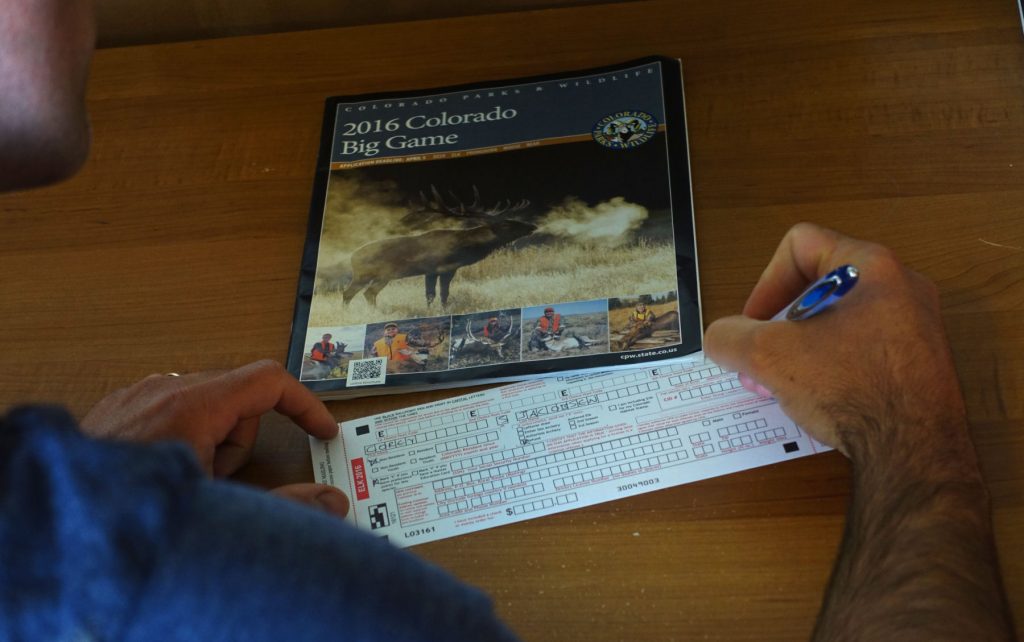
Some application periods begin in December, and some states don’t notify tag recipients until mid-July. Some states require you to buy a non-refundable hunting license in advance of participating in the tag drawing, while others simply charge a minimal fee to apply. Some require the license and tag fee to be paid upfront, while others charge your credit card only after you have successfully drawn. A few states offer an equal chance of drawing to all applicants without a points system. Most states, however, have adopted a preference point or bonus point system to weight the chances of drawing for those who have been applying longer.
PREFERENCE POINTS
In a preference point system, hunters who apply for a tag and are not successful in obtaining the tag, can opt to be awarded a preference point. In states that utilize a preference point system, tags are allocated through a draw system and go to the applicants who apply with the most preference points. Those who have applied the longest are given “preference” and rewarded for standing in line longer than those who have just started applying. Priority in the draw – and the tags that are awarded – is given to those with the most preference points.
For example, let’s say there are 100 applicants with 5 preference points that apply for an elk tag. There are no applicants with more than 5 preference points applying for these specific tags. If there are 200 tags available, everyone with 5 points is guaranteed to draw that tag. Then, the system moves down to those with 4 points. If there are 200 applicants with 4 points, the system will randomly draw 100 of them to receive the remaining tags, and the other 100 unsuccessful applicants will receive a preference point so they will be at 5 points the next year. Anyone with less than 4 points in this example will have no chance of drawing a tag that year.
In high-demand elk units known for trophy potential, it is possible that applicants with multiple preference points will have no chance of drawing a tag for several years – or ever! There are multiple units in several states where an applicant with 12-15 points won’t ever be able to draw that tag due to the limited number of available tags and the high number of applicants with more preference points ahead of them.
So, how do you get preference points? You can only obtain one preference point per species, per state, per year. Not all states offer Preference Points (see below for state by state details). Preference points are typically awarded when an applicant applies for a hunt but is not drawn – it is the “consolation prize” when you do not draw a tag and it gives you the opportunity to have “better luck next time.” Some states allow you to “purchase” a preference point directly without actually applying for a specific elk tag. In this case, you can simply pay the fee to obtain a point, and collect points until you have enough to draw or want to start applying. This can be helpful if you know you aren’t going to be able to hunt a particular state or unit for several years, but want to eventually do so.
A preference point system is clearly advantageous to the applicant with the most points. But, if you need at least a dozen points to draw a tag today, than means you are at least twelve years away from even having a chance — and that is assuming you stay in the game and earn a point for each of the next dozen years. That also assumes that the number of points required to draw that tag doesn’t creep upwards – an issue known as “point creep”. I will talk more about the strategy of obtaining and using preference points later on in this chapter.
BONUS POINTS
A bonus point system is much simpler to explain and understand than a preference point system. A bonus point system is still based around a “names in a hat” lottery-style drawing, but in this case, your name goes in the hat one extra time for each bonus point you possess. If you apply with no bonus points, your name gets put in the hat once (for your application). If you apply with one bonus point, your name gets put in the hat twice (once for the application, plus one more time for your bonus point). If you have five bonus points, your name is in the hat six times (one for the application, five for your bonus points). It is a random draw, but it is weighted by the number of points you have. This system allows someone with no points to still draw a tag, but offers better odds of drawing to those who have applied unsuccessfully for multiple years.
Some states award bonus points only when an applicant is unsuccessful in a drawing, while some states allow hunters to purchase bonus without applying for a hunt. Again, this gives you an opportunity to build up bonus points for future applications.
One thing to mention about Limited Entry (Draw) tags is that there are times when the number of applicants is less than the number of available tags. In these situations, there are tags “leftover” from the draws. Leftover tags often go on sale (or are available in a “leftover drawing”) after the initial drawing and are a great way for hunters to purchase (or draw) a “second chance” tag that was otherwise limited.
Another thing to keep in mind is that many states have created custom versions of preference points and bonus points. Some states set aside a certain percentage of the tags for those with the most points, while the remainder of the tags are issued randomly. I’ll provide more details on each state and the system they use to allocate tags below.
LANDOWNER TAGS
I’ve covered OTC tags and explained Limited Entry and Leftover tags, as well as the operational procedures of lotteries and their related point systems. But there is one additional way you can obtain an elk tag — Landowner Tags.
Landowners in many western states have the ability to obtain elk tags for the unit that their land is in, even if the unit is a limited entry area. These tags are often given to landowners in compensation for the damage elk might cause to their land during the winter, or as a reward for allowing access to hunters on their land. I won’t go into all the varying details of how landowners obtain these tags, but many states allow landowners to transfer the tags to other hunters.
Landowner tags have created a pretty competitive market for purchasing tags that are otherwise difficult to obtain (i.e. draws). If you weren’t successful in drawing a limited entry tag or don’t want to wait in line to draw a tag, there are options for purchasing a tag, even in some of the hardest to draw units.
As you can probably imagine, the open market for these tags can quickly drive the prices quite high. Landowner tags for high-demand units can cost thousands, sometimes upwards of $20,000. If you have the budget to consider this route, it is important to understand any potential limitations or restrictions on the tag. Some landowner tags can only be used on that particular private land, while others are good for the entire unit. Additionally, most landowner tags are good only for one particular season (archery, muzzleloader, firearm, etc.). Be sure to get all the information on these tags before committing to the purchase.
STATE-BY-STATE TAG INFORMATION
There are basically 10 western states that offer realistic elk hunting opportunities. In no particular order, they are: Washington, Oregon, Idaho, Nevada, Utah, Arizona, Montana, Wyoming, Colorado, and New Mexico. Additionally, there are several other states that offer elk hunting opportunities, but the opportunities are so limited that I won’t go into detail here (states like California, Kentucky, Pennsylvania, Michigan, etc.).
Each state manages their elk herds differently, and has differing rules governing the hunting in their respective state. It is imperative that you research the seasons, regulations, and other vital information for the state you decide to hunt.
Additionally, the application dates, purchase deadlines, license/tag costs in each state changes often. The summary below is meant to be a guide in helping you determine what state might be the best fit for you and your elk hunting goals. If you are looking for more detailed, specific information regarding updated dates, costs, etc., I’ll provide a resource – the one I use – down below.
In a nutshell, here is an overview of the top 10 western states for elk hunting:
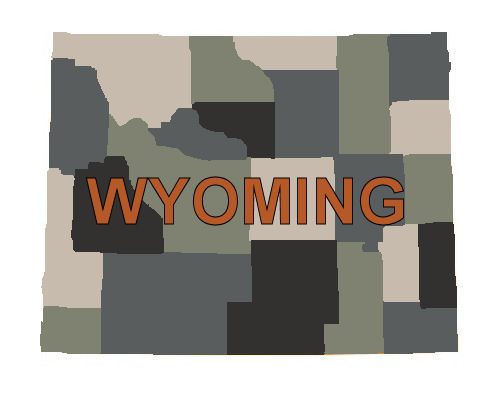
WYOMING - Wyoming can be a confusing state for non-residents. However, if you take the time to learn the system, it can be a great state to hunt. There are several units (both General and Limited) that offer great trophy potential as well as relatively high elk populations. General elk licenses are available for residents of Wyoming to purchase over-the-counter (OTC), but non-residents must obtain General elk licenses in the draws (i.e., there are no OTC tags for non-residents in Wyoming). Additionally, non-residents are not allowed to hunt in any federally designated Wilderness areas without a professional outfitter or a resident guide.
The non-resident application deadline for elk is January 31, 2022 at midnight. New in 2020, the actual results for the NR draw in Wyoming aren't available until the 3rd week of May! In the past, applicants could find out results in February. No hunting license is required to apply, but the full tag fee and non-refundable $15 application fee is required. With the new changes to draw results, this means the state of Wyoming will now hold on to your money for several months. Wyoming has a split system for licenses with 40% reserved for a "Special" elk License ($1,283) and 60% reserved for the "Regular" elk License ($707). The only difference in these licenses is the price - and the fact that for the most part, there are fewer people who apply for the "Special" license due to the cost, which means your chances of drawing that license is usually better than your chances of drawing a "Regular" license. If you are successful in obtaining an elk license in Wyoming, you will also need to purchase a Conservation Stamp for $12.50. Wyoming utilizes a modified Preference Point system, where 75% of elk licenses are dispersed to those with the highest points (Preference system). The remaining 25% of tags are then given randomly, regardless of Preference points. If you are unsuccessful in your application, all but the $15 application fee will be refunded to you. If you wish to purchase a Preference point if you are unsuccessful in obtaining an elk license, Wyoming has a separate application date for that (July 1 - October 31). The cost to purchase an elk Preference point is $52. Youth may also obtain a Preference Point for just $10 (youth must be at least 12 years old by December 31 of the year they are applying or purchasing the Preference Point).
For more information, visit: https://wgfd.wyo.gov
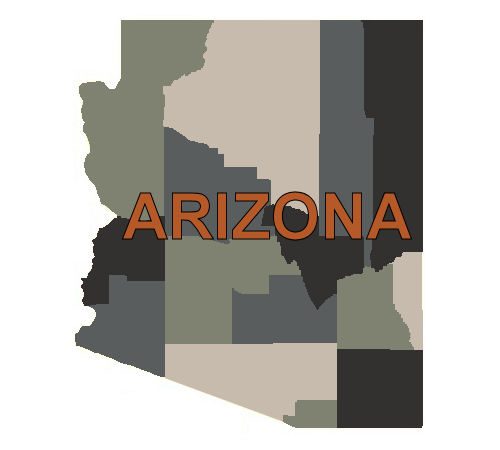
ARIZONA - Arizona is the land of giants in the world of elk hunting. And while it has a reputation for big bulls living behind every tree, the trophy management mentality comes at the price of opportunity (and big bulls don’t really live behind every tree). Tags for the better units can take 20 years or more to draw, and there are no OTC elk tags in Arizona (at least none worth mentioning). However, once you draw a tag, there is great trophy potential in just about every unit.
Hunters wishing to participate in the drawing or to obtain a bonus point must submit an online application by 11:59 p.m. (Arizona time) on February 8, 2022. Applicants must purchase a non-refundable $160 Combination Hunt and Fish license to apply for an elk tag or to purchase a bonus point (bonus point is an additional $15 fee and you must indicate on your application that you would like to receive a bonus point if you are unsuccessful in the draw). The $665 tag fee is not charged until you successfully draw a tag. Arizona utilizes a 3-Part Bonus point system and restricts non-residents to "no more than" 10% of the tags.
Arizona's 3-Part system is quite confusing, and I won't bore you with all of the details.
If you're interested in learning more about their system, visit: https://www.azgfd.com/hunting/draw/process/
In addition to purchasing bonus points (or acquiring bonus points through unsuccessful applications), Arizona offers a Permanent Hunter’s Education Bonus Point for non-residents who complete the Arizona Hunter’s Safety course. They also award a Loyalty Bonus Point for applicants who apply for a species for five consecutive years. These points remain with an applicant, even if they draw, as long as they continue applying each year.
For more information on elk hunting in Arizona, visit: https://azgfd.gov
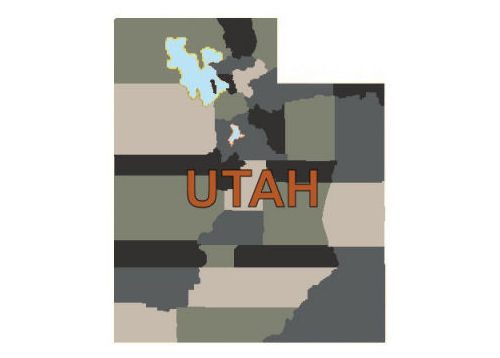
UTAH - Utah is a great state. Utah has great elk. But your chances of obtaining a limited entry elk tag in Utah is not great. Elk are managed for trophy potential throughout much of Utah, so most of the elk tags are available only through a limited entry draw. Non-residents are allocated 10% of the available elk tags in hunts where at least 10 elk tags are available. However, there are some general, OTC bull elk and spike elk permits available as well, but don’t expect the same experience on those hunts as you will have on the limited entry hunts.
The Online Application deadline for elk is March 3, 2022. A $72 hunting license is required when applying, and a non-refundable $15 application fee is required (even if you're just applying for a bonus point). Hunting licenses are valid for 365 days from date of purchase, and if a hunting license expires before the season for which a tag is valid, the owner must buy a new hunting license before hunting. The $1000 fee for a limited entry elk tag will be charged only if successful in the drawing. Utah uses a custom preference/bonus point system where 50% of tags go to those with the most points and the remaining 50% go into a random drawing. In the random drawing, each bonus point gets you another chance, so anyone has a chance of drawing tags - even applicants with 0 bonus points. There are general season elk tags available on a first come/first serve basis in a few any-bull units and spike-bull elk units (archery only) which go on sale for $593 in July.
For more information, or to apply, visit: http://wildlife.utah.gov
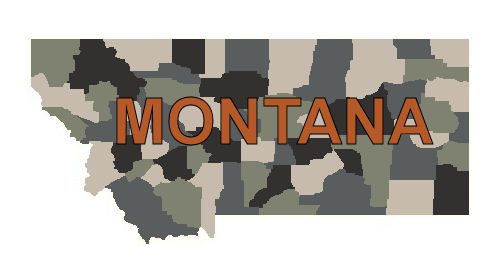
MONTANA - Montana is a state of opportunity, but also has some great trophy potential in many units. The general elk season in Montana is nearly 3 months long and allows a license holder to hunt elk with both a bow and a rifle (during the appropriate seasons).
For non-residents, there are two parts to the License/Permit requirements. In order to hunt the wide selection of general elk units Montana is famous for, you must apply for an Elk Combination License in the general draw. For several years, there were fewer applicants than available licenses, so the "leftover" elk licenses were available for purchase after the general draw. However, there are now more applicants than available licenses, so if you want to hunt elk in Montana, you will need to apply for the Elk Combination License in the draw. Additionally, if you want a chance at obtaining a Special elk permit (higher trophy potential in limited units), you must ALSO apply for the Special Permits during the same application process (note that you submit separate applications for Elk Combination License and Special Elk Permits). Your Special Permit application is only valid if you first draw an Elk Combination License in the draw (i.e., if you don't draw the Elk Combo License, you have no chance of drawing a Special Elk Permit).
Montana offers 17,000 Big Game/Elk Combination licenses for non-residents. There are 2 separate drawings for these licenses - one for those who have preference points (75% of available licenses), and one for those who don't (the remaining 25% of available licenses). Due to this, it is completely possible that someone with no preference points may have a better chance of obtaining a license than someone with 1 or 2 preference points. For the Special Permit draws, non-residents are limited to no more than 10% of the available permits. Montana utilizes both Preference and Bonus points. "Preference Points" are used for the Elk Combination Licenses, and separate "Bonus Points" are used for the Special Permit draw. Preference Points for the Elk Combination Licenses cost $100 and can be received with an unsuccessful application or by purchasing separately from July 1 - September 30. Bonus Points for the Special Permits can also be received with an unsuccessful application (by paying the $20 fee at the time of the application) or by purchasing separately from July 1 - September 30 (for $25). Non-residents are not allowed to possess more than 3 Preference points. Bonus points are "squared" in Montana, meaning that if you have 3 Bonus points, you will receive 9 chances in the draw for the Special Permit.
The application deadline for elk is April 1, 2022. The full license fee of $1108 for an elk/deer combo license (or $934 for the elk combo license) will be charged when you draw.
For more information, visit: http://fwp.mt.gov
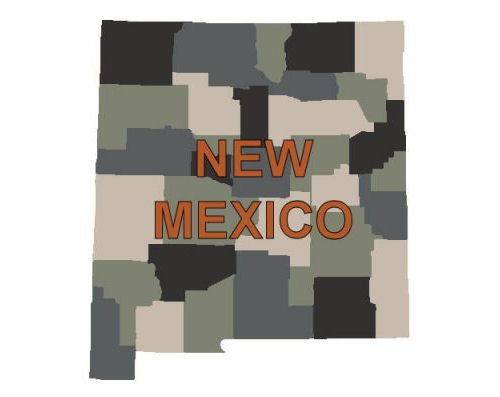
NEW MEXICO - New Mexico is another state that is known for big bulls. If you are noticing a pattern here, it won’t come as a big surprise that elk tags to hunt these mature bulls are harder to come by. Non-resident hunters hunting without an outfitter can only draw "up to" 6% of the available tags, and there are no OTC tags for elk in New Mexico. New Mexico does offer landowner tags in several of the units, but the better tags bring a high premium.
The application deadline for elk is March 16, 2022. A $65 hunting license is required when applying, and the full tag fee of $548 (Standard) or $773 (Quality) is also required at the time of the application. The tag fee, minus a $13 non-resident application fee, will be refunded if unsuccessful. Note that the $65 hunting license is not refundable.
New Mexico is one of the few states that does not have a bonus or preference point system. All applicants have the same chance of drawing each year. Additionally, if your application is selected, New Mexico looks at your first 3 choices on the application before moving on. It definitely pays to list 3 hunt choices when applying for elk in NM.
For more information, visit: http://www.wildlife.state.nm.us/
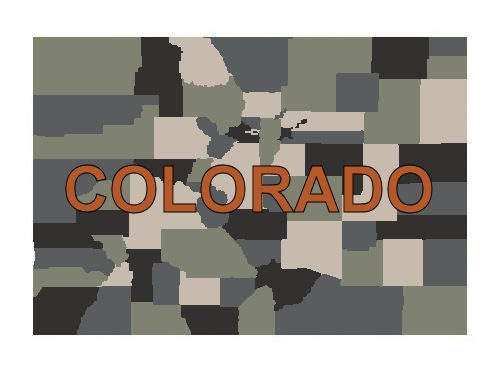
COLORADO - When it comes to elk hunting, Colorado is the land of plenty: plenty of opportunity, plenty of elk...and plenty of other elk hunters. However, there is potential for trophy elk in several of the draw units, as well as many of the OTC units as well. Plus, you can’t beat Colorado when it comes to just getting an elk tag and going hunting.
The application deadline for elk is April 5, 2022. In the past, no hunting license has been required when applying, but beginning in 2019, hunters are now required to hold a “qualifying license” in order to apply for an elk license or to purchase a Preference Point. The online draw applications will not be accessible until you purchase your qualifying license. A qualifying license is not needed if you simply plan to purchase an Over-the-counter elk license. The least expensive “qualifying license” option for a non-resident is the Annual Small Game License, which is $86.50 (and is non-refundable). In addition to the “qualifying license”, you will also be required to purchase a $10 Habitat Stamp at the time of purchase, and pay a $9 application fee per species at the time of applying. If you are successful in the draw, you will then be charged the tag fee of $700 (antlerless tags are $526) once you draw. If you are unsuccessful in the draw, or you choose to apply for a Preference Point as your 1st choice option, you will not be charged any additional fees.
Limited (draw) licenses are limited to 20-35% for non-residents. OTC elk licenses are good for many units in the state and are available to purchase beginning on August 2, 2022. They are sold online, by phone at 1-800-244-5613, at license agents and CPW locations around the state.
For more information, visit: https://cpw.state.co.us
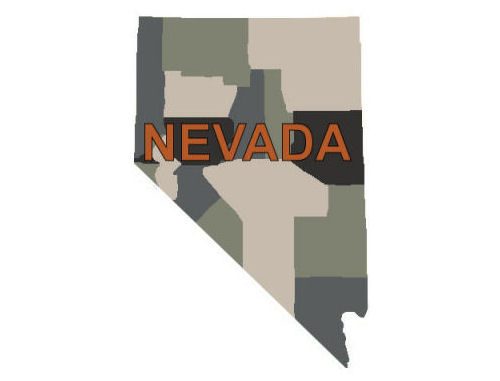
NEVADA - Nevada has been producing some monster bulls the past 10 years or so, and there is a reason for it. Besides the great habitat and genetics, elk tags in Nevada are incredibly limited. Combined with the high cost of an elk tag, many hunters skip over applying in Nevada.
The application deadline for elk is May 10, 2022. For online applications, hunters only need to submit the nonrefundable application fee ($21.50) and license fee ($155). The license fee can be deferred or refunded if you don’t want a bonus point. However, if you choose the option to receive a license refund, you will not gain a bonus point. If drawn, the tag fee of $1200 ($500 for antlerless elk) will be charged to your credit card.
Nevada squares your bonus points for each year you apply and are unsuccessful. There are no OTC tags, but some landowner tags will be available. These usually sell for $10,000-$20,000 depending on the unit.
For more information, visit: http://www.ndow.org/
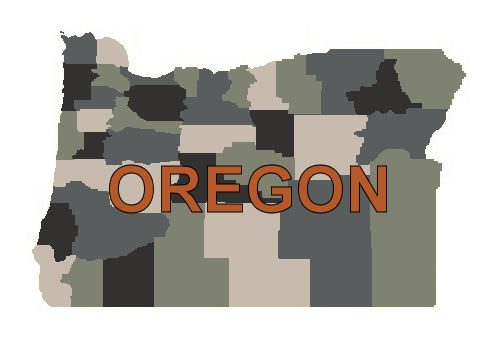
OREGON - Oregon offers opportunities to hunt both Roosevelt and Rocky Mountain elk. There are a few higher quality units that award tags through a draw process, but the wait for those tags can be longer than 15 years for a non-resident. Until recently, Oregon offered ample OTC opportunities (for both Roosevelt and Rocky Mountain elk) for non-resident elk hunters. In 2022, however, archery elk seasons in 13 units changed from OTC to draw. In the remaining OTC areas, there are areas where you can work hard and escape hunting pressure, but it will require a lot of effort to get away from the crowds in these areas.
The application deadline for elk is May 15, 2022. A $172 hunting license is required when applying, and a non-refundable $8 application fee per species is required. If drawn, a tag fee of $588.00 will be charged to your credit card. 75% of tags go to those with the most preference points. The remaining 25% go in a random draw. Tags must be purchased before the first day of season.
For more information, visit http://www.dfw.state.or.us/
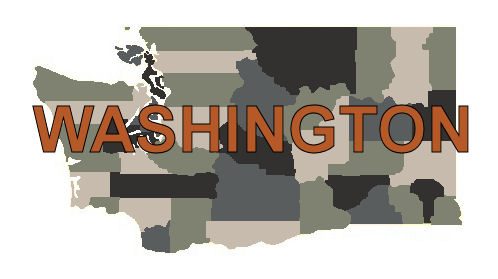
WASHINGTON - Don’t waste your time. Seriously, Washington is a tough state for elk hunting. Let me rephrase that – Washington is a tough state to get an elk tag in. It should be near the bottom of your list as you consider a state to hunt for elk. However, there are OTC opportunities, in addition to some very high quality draw hunts (which are VERY HARD for non-residents to draw).
The application deadline for elk is May 19, 2022. You must purchase an elk license for $497 and a special permit hunt application for $110.50 before you can even apply for the Special Elk Hunt Permit. Washington has a weighted bonus point system. OTC tags are available for some areas of the state (for Rocky Mountain and Roosevelt elk) beginning April 1st.
For more information, visit http://wdfw.wa.gov/
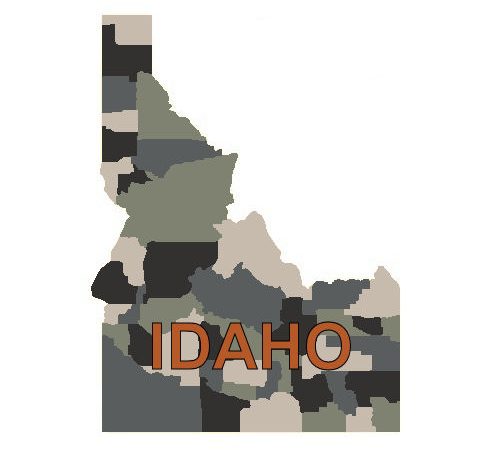
IDAHO - Traditionally, Idaho has offered multiple OTC options for both archery and rifle hunters. However, in 2021, Idaho reduced the number of non-resident tags available, while also increasing the costs. Non-residents elk tags are also limited by elk hunting zone now, rather than a total number of available tags as was the case previously. Additionally, most NR elk tags sell out within minutes on the date that they go on sale, which has led the Fish and Game Department to issue random numbers to those wishing to purchase an elk tag. While the tags are still technically considered OTC, obtaining one really depends on the random number you are assigned ahead of the purchase time. If you manage to get a low random number, you may be able to purchase a tag in the zone you desire. If not, you may not be able to purchase a tag at all.
There are a few draw units in Idaho with great trophy potential, but for the most part, the state is managed for opportunity which generally means a lower age class with more opportunity to hunt. Idaho does not have any kind of a bonus or preference point system, so everyone has an equal chance of drawing a limited tag each year. You must purchase a license in order to apply for the limited tags.
The application deadline for elk is June 5, 2022. A $185 hunting license and $18 controlled hunt fee is required for applying, but the $651.75 tag only needs to be purchased if successful in the draws (controlled hunt tags must be purchased/picked up by August 1st or they will be forfeited). Tags from controlled hunts that are not purchased by August 1 will be available in a leftover drawing with an August 5-15 application period.
For more information, visit: http://fishandgame.idaho.gov
Here is my generic ranking of States that offer OTC elk tags. This chart includes several factors that I use to determine the rankings, with 4 stars being great and 1 star being poor. Keep in mind that not all of these states offer true OTC opportunities (see notes below the chart for explanations):
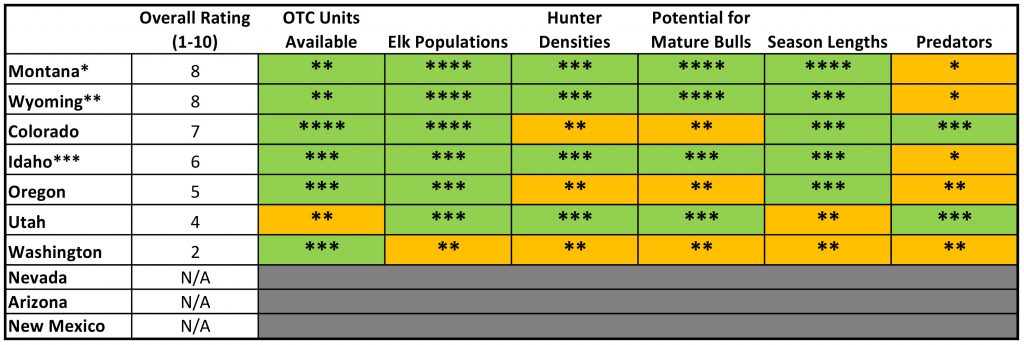
*Until recently, Montana had left-over NR General Combination Elk licenses available after the draws, which made it possible to purchase a left-over license "over-the-counter". However, due to demand the past several of years, there have been no left-over NR General Combo Elk licenses, and NR elk licenses are now only available through the controlled hunt draw. Residents are able to purchase these same licenses OTC.
**In Wyoming, residents can purchase General Elk Licenses over the counter. Non-residents, however, must apply and draw the General Elk License, which is "possible" with no points. However, General Elk Licenses have increased in popularity in the past several years, and it now typically takes 3-4 points to be guaranteed a General Elk License as a non-resident.
***Idaho is still technically considered an OTC state for non-resident elk hunters, but it's really just a modified lottery. See above for the details, but it's no longer possible to just show up and buy an elk tag in Idaho as a non-resident.
And here is a breakdown of the elk license/tag costs for non-residents in each of the states, in order from least expensive to most expensive:
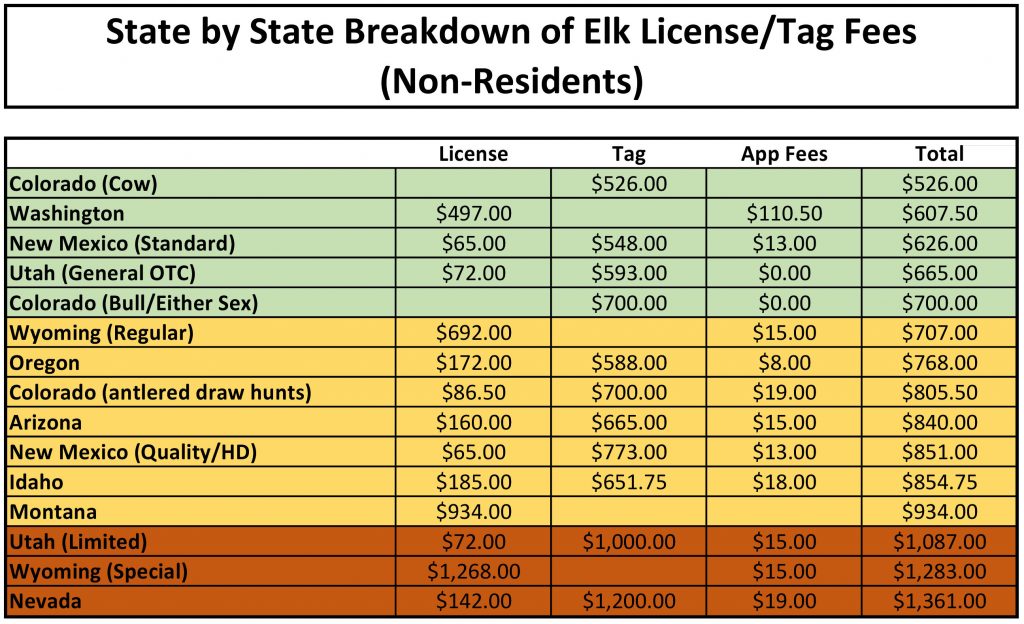
LONG-TERM AND SHORT-TERM STRATEGIES
Knowledge is power. Now that you are armed with all of this information for obtaining elk tags, you can more easily determine what your elk hunting future looks like. Whether you want to hunt elk every year, every few years, or just a few special times throughout your lifetime, you need to put a game plan into action.
It isn’t necessary to apply for limited entry tags or collect bonus/preference points, but hunting solely with over-the-counter tags does have drawbacks. OTC units typically receive the most pressure and have the least trophy potential when compared to their limited-entry counterparts. If you want to hunt with less competition and have a better chance at a bigger bull, you will definitely want to include limited entry tags in your master plan.
Your strategy for obtaining preference/bonus points and pursuing limited-entry tags is going to be unique to you. There isn’t one formula or plan that has to be followed. Factors such as your hunting goals, your budget, your location, and your schedule will affect what states you should be applying for year-after-year.
A common scenario for many elk hunters involves a three-part strategy:
- The ability to hunt elk every year (OTC).
- An opportunity to obtain a good tag as often as possible (every 3-5 years).
- A plan to draw a really special tag in the long-term (10+ years).
With this strategy in mind, here is a sample plan. You can apply for Wyoming and/or Colorado every year as part of the strategy to fulfill goal #2. A general tag in Wyoming is draw-only, but the odds are decent, and there are several other tags that can be drawn in Wyoming with 3-5 points. Both Wyoming and Colorado use a Preference Point system, so you can better calculate when you should be able to draw a tag in those states, and apply accordingly (so you don't end up drawing a tag in both states on the same year). Since there are limited tags in each state that have decent draw odds, you should be able to plan on hunting elk with a draw tag in one of these states every 3-5 years.
You still have a goal of obtaining a really good tag every 10 years or so, and several states offer excellent elk hunts that are difficult to draw. You could consider accumulating bonus points in Arizona year-after-year, and saving them for a really special hunt down the road. You could also apply for a great limited-entry hunt in New Mexico. There are no bonus/preference points to accumulate in NM, but the tough draw odds combined with excellent hunting opportunity make it a great candidate for your third goal. Utah and Nevada are also decent states to consider for drawing your quality, long-term elk tag.
With plans in place for drawing decent tags every 3-5 years, with a great tag every 10 years or so, you just need a guaranteed (or more readily available in a draw), "OTC" tag to fill in on the years you don’t draw. There are OTC or leftover tags typically available in several great elk states such as Colorado, Oregon and Idaho, and Montana offers a really good chance of drawing an Elk License every other year or so.
Lastly, I have only listed what I consider to be the top 10 western elk states for elk hunters. There are several other opportunities, and depending on where you live, they might be a good option for you to research and apply for. Kentucky, for example, sets aside a number of tags for non-resident hunters. Although the odds of drawing a rifle bull elk tag there are far from likely, the odds of drawing other tags — such as an archery cow elk tag — are not out of the question. Plus, it only costs $10 to enter the lottery, so why not put your name in the hat if you are an elk hunter in that region of the country? Opportunities also exist in states such as Pennsylvania, California, and Alaska, just to name a few.
MY PERSONAL ELK TAG APPLICATION STRATEGY
For me, I have basically two ways of obtaining an elk tag: buy one “over-the-counter” or draw one through a “lottery”. I haven’t been in a position to purchase landowner tags, so my personal strategy involves only the first two.
Over-the-Counter (OTC) tags are just that – you show up and buy a tag. Several states offer OTC elk tags, including Utah, Colorado, Idaho, Oregon, and Washington. There are some specific requirements for each state that are worth reading up on as you plan your hunt, but for the most part in these states, you can obtain a guaranteed tag if you want one.
For me, 75% of my hunts are done on OTC tags. The reason why is simple: I want to be able to hunt elk every year. Fortunately, these states – and my home state of Idaho – allow for me to do that. It is possible to hunt with an OTC elk tag every single year, sometimes multiple times per year if your budget and vacation time will allow. Sitting out an entire elk season waiting to “draw” a tag is not an option for me, so I am grateful for these OTC opportunities.
However, OTC areas are managed for opportunity, not necessarily for quality. If you want to build consistent quality in an area, it requires restricting access and/or opportunity. Quality and opportunity do not usually coexist, or at the very least, one decreases as the other increases. With that being said though, there are plenty of quality areas available within OTC units, and with a little homework – and leg work – there are definitely areas where you can have your cake and eat it too. The benefit of limited draw areas is that you will usually find less hunting pressure, and therefore, improved hunting quality.
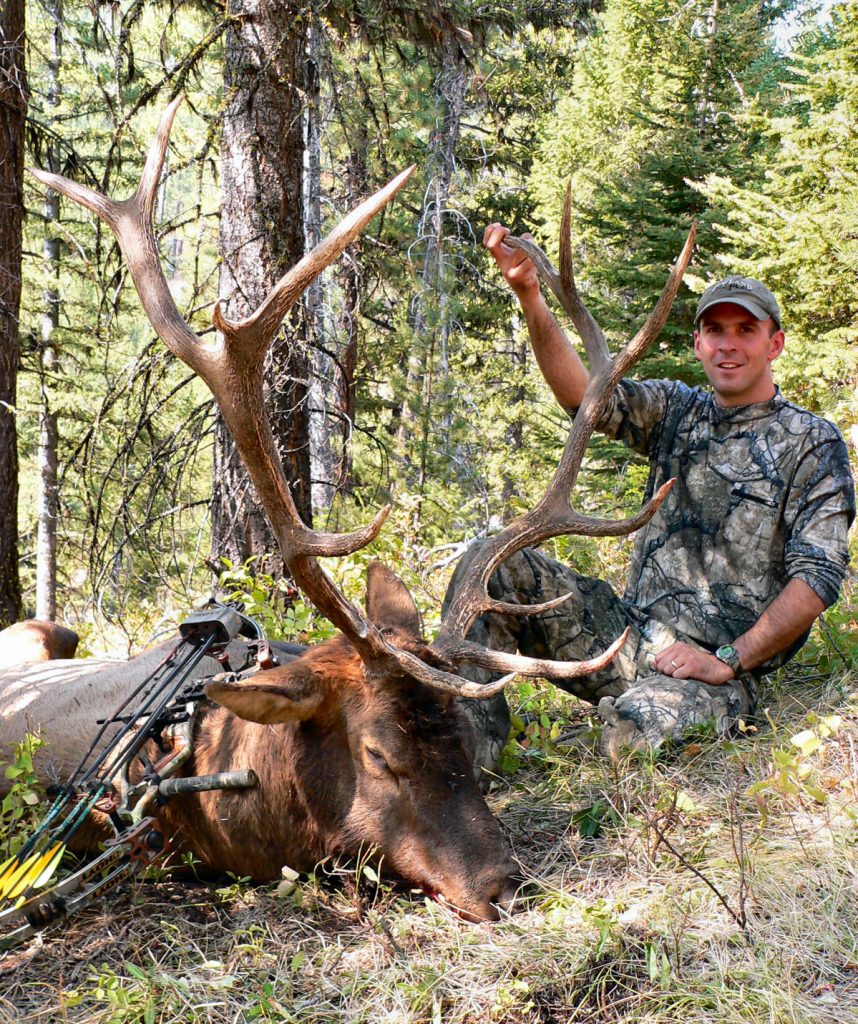
Limited Tags
A limited, or “draw”, tag is one where the state is managing the elk numbers and has placed a quota on how many elk tags they are willing to give out. When there are more hunters desiring that tag than available tags, the states allocate these tags through a lottery style drawing. The draw procedures and application processes differ from state to state, but in a nutshell, your name goes in a hat and if it is selected, you get a tag.
In really hard to draw areas (i.e., high quality), odds are often in the single digits, or even below 1%. To increase the chances of drawing for those who have applied longest, many states have implemented bonus point or preference point systems. Again, each state manages their point systems differently, but what I want to focus on here is if it is really worth obtaining points.
Points
Bonus and/or preference points are available in multiple states. Washington, Oregon, Montana, Wyoming, Nevada, Utah, Colorado, Arizona, and many more states, offer an opportunity to collect points to increase your odds of drawing an elk tag in the future. Idaho and New Mexico do not have a point system. In most states, if you apply for an elk tag and are unsuccessful, you can earn a point. Some states allow you to “purchase” a point without even applying. This can be handy if you know you can’t hunt there this season, but want to begin or continue accruing points.
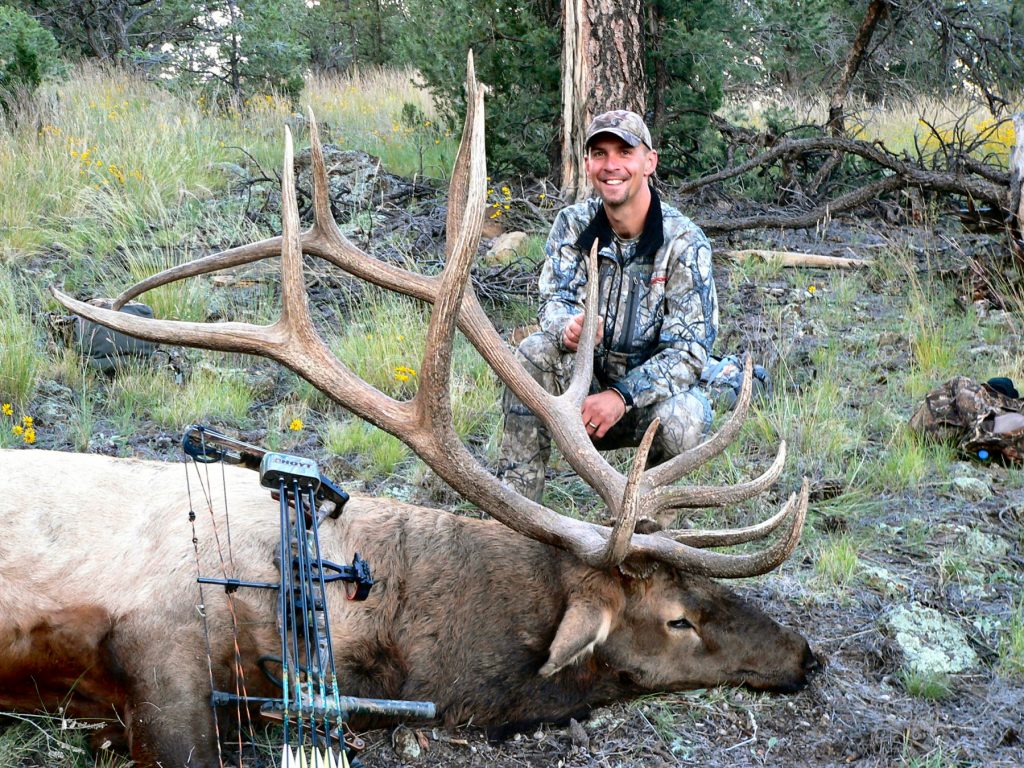
I personally play the points game in several states. I don’t necessarily agree 100% with giving preference to those who have applied longest as it drastically decreases the odds for new hunters or those entering the draw for the first time. However, almost every western state has a point system, and if we want to hunt in one of those states, we have to play the game.
Through the accrual of points in multiple states, I have a strategy that will enable me to draw a really high quality tag every 7-8 years or so. In addition to that high quality tag, I also aim to draw a good tag every 3-4 years. Then, I supplement the years when I don’t draw a “limited” tag with OTC tags. This enables me to have a good mix of opportunity and quality in my elk hunting adventures. However, playing the points game can get somewhat expensive. Some states require the purchase of a non-resident hunting license in order to obtain a point. Additionally, some require the full tag fee to be paid up front, and then issue a refund – or partial refund – if you don’t draw. See the details for each specific state listed above.
In my opinion, if you are just starting out in the points game, it really isn’t worth your time applying for Washington. Additionally, Colorado, Oregon, and Utah aren’t states I would look to if I wanted a chance at a quality hunt in the next 10 years. That leaves Arizona, Nevada, Wyoming, and Montana as possibilities.
Overall, Arizona and Nevada manage for big bulls, while Wyoming and Montana manage for great experiences and some nicer bulls. You could pick two of these states to build points in, and maybe throw your name in the hat for a state like Idaho or New Mexico that doesn’t have points, then supplement with an OTC tag on the years you don’t draw. This will give you an opportunity to draw a really good tag down the road and still be hunting each fall, without completely breaking the bank.
Again, points aren’t for everyone. Hunting out of state isn’t for everyone. But if you are looking to expand your elk hunting horizons or to add some quality to your hunts, playing the points game can improve your odds. On the flip side, I’d strongly urge you not to wait on drawing your quality hunt to go elk hunting. Find a state with OTC tags and go hunt. Mixing up OTC opportunities with limited draw hunts can be a great way to balance opportunity and quality, and hunt elk on a regular basis.
Now that you have a deeper understanding of elk hunting seasons, methods, locations, and tags, you can begin to formulate a plan for your elk hunt. All that’s really left in finalizing your plan is determining when you want to go!
Click 'Next Chapter' Below to Continue on to Chapter 3: Finalize Your Plan.
